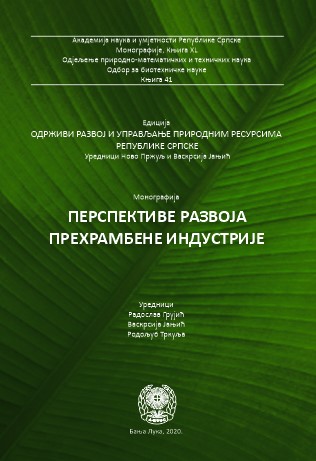Meat industry by-product production, processing and use
DOI:
https://doi.org/10.7251/EORU2002421OKeywords:
Animal by-products, Harmless removalAbstract
Safe disposal of the inedible animal waste is considered as irreplaceable veterinarysanitary and preventive measure in suppression of spreading of infective animals and human diseases. Even more is emphasized its role in environmental rehabilitation and protection. Disposal of by-products and animal waste in Republika Srpska is not resolved in an appropriate manner and poses a danger to human health and the health of animals. Establishing a sustainable system is of great importance for the further development of agriculture and it is a prerequisite for sustainable economic growth and the opening of foreign markets for agricultural products from Republika Srpska. In order to achieve this, there is a need for organized collection, storaging and disposal of animal by-products from slaughtering of animals by their technical processing in specialized plants. These plants allow us to produce high-quality animal feed or the raw material for biofuels production (biogas, biodiesel) with the complete protection of the environment. The system of local intermediaries for the storage of animal waste is suitable as a solution, followed by an appropriate network for the collection of by-products and animal waste and plants for its processing. Economic side of this problem implies collection and safe disposal of huge quantities of biological materials that produce costs, which have to be incorporated in prices of the products. If waste of animal origin is not processed (recycled), they represent lost raw material that was possible to incorporate in production of proteinaceous - energetic feed, technical fat for chemical industry or fuels with high calorific value. According to the European Union directives included in the Regulation (EC) No 1069/2009, by processing of sanitary safe inedible by-products obtained during slaughtering of animals (materials Category 3), it is possible to obtain: proteinaceous, protein-mineral and energetic products aimed for animal feeding, technical fats, feathers, skins…, and from dead animals (materials Category 2): meat-and-bone meal as an energent, technical fat as a raw material for further processing in chemical industry or for production of bio-diesel, biogas and compost.
